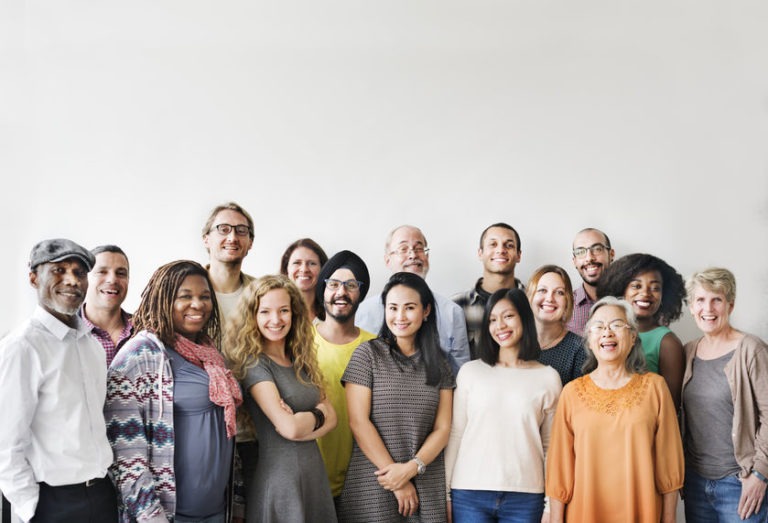We have written before about how different generations view mentoring and how their generational perspectives may impact their approach to mentoring specifically. It’s an intriguing theory that can help make sense of why some people see mentoring as a way to advance their careers while others may see it as a form of collaboration.
How Different Generations View Mentoring
As the generational dynamics shift in the workplace, however, it may be time to adjust our perspectives again (and no, I don’t suggest you go the route of CBS News, which completely forget about Gen Xers). We now see fewer people from the Traditionalist or Silent generation (born between 1928 and 1945, according to the Pew Research Center) and even the beginnings of a decline of the oldest cohorts from the Baby Boomer generation (born 1946-1964) in the workforce.
Gen Z (born 1997- today) is the youngest generation arriving on the scene. In fact, in March 2018, the Pew Research Center updated its definition of the Millennial age range to account for these post-Millennial Gen Zs.
So how does engaging with Gen Z in the workplace impact our ideas around mentoring and generations? Here is an updated view of a graphic from Randy Emelo’s book Modern Mentoring that accounts for these new generational definitions and their perspectives on mentoring.
A few key phrases that characterize Gen Z include:
- Entrepreneurial
- Digital natives
- Diverse and global
- Prefer face-to-face communication
A Robert Half “Get Ready for Generation Z” study reported that the top characteristic Gen Zers most value in a leader or boss is honesty/integrity (38%) followed by mentoring ability (21%). This generation wants learning opportunities, career advancement opportunities, and mentoring. I feel like I could have said the same thing about Millennials 15 years ago. And just how Gen X has often been described as pushing for work/life balance, the same can be said today for Millennials as they have children and get older.

While different generations may have unique life experiences as a whole that help shape them (e.g., The Great Depression, The Vietnam War, 9/11, The War on Terror, The Great Recession), I think we all have more in common than we realize or think.
It seems safe to say that most of us would appreciate having a mentor who could help us at work and who could be a guide and a sounding board during our professional journey. I also think it’s safe to say that mentoring is a natural activity that we all participate in without realizing it.
Whether we want to be mentored to learn a new skill, get a promotion, or understand a new perspective, the drive to be involved in mentoring is to better ourselves.

It’s natural that we want to group people, things, or ideas together to help us make sense of the larger whole. But the downside to this is that it can create stereotypes and labels that are then forced onto people because they happen to fall into a designated group.
Millennials could tell you how frustrating and bothersome this is as they struggle to fight back against generational labels such as being lazy, entitled, and self-consumed.
To combat this, I propose a radical idea to use in the workplace: Instead of looking at someone’s age or generation and developing ideas about what they are like or what they would want based on that data, talk to them. Get to know them. Ask them!
Yes, I know this is not actually a radical idea, but it can certainly fell like it is when headlines scream about “How Businesses Can Adapt to Gen Z” or “What to Look for When Gen Z Comes Knocking.”
Instead of looking at different generations and deciding on a mentoring approach to take based on stereotypes, here are some universal ideas on how to make mentoring more approachable and accessible to everyone in your workforce.
1. Use mentoring software
Consider using mentoring software to make the entire process of mentoring easier for your employees. People can use the software to find a mentor or mentee who can help them address their learning or development goals. It’s a great way to make impartial mentoring matches. They can also use the software to establish goals for their relationship and track progress against said goals. (Administrators can also reap many benefits via mentoring software.)
2. Offer multiple types of mentoring
Mentoring can take the form of traditional one-to-one pairs, more modern reverse mentoring, broader group mentoring, and more. Don’t limit your mentoring options based on what you think different generations want. “Well, Millennials like collaborative learning, so we will offer them group mentoring; and Gen Z wants to show they are valuable to the company, so we will offer them reverse mentoring.” Instead of limiting the options for mentoring, provide a multitude of choices for people so that they can decide for themselves what form of mentoring they want to use.
3. Let people decide how they meet and communicate
Some people like to meet in person for their mentoring relationship, while others prefer email. There are still others who want to text or use video chatting, while some want to discuss things over the phone. If you went by generational stereotypes only, you may think that Gen X wants to use email, rather than video chatting. But as technology becomes more commonplace, it’s an unsafe assumption to make. Instead, let people make their own choices about how they communicate with their mentees and mentors. Give them ownership over all aspects of the relationship.
4. Provide training and support
To help make mentoring more approachable and accessible to everyone, think about how training and support can fit into the picture. Provide your employees with tips and tricks to use that can make their relationships a success…regardless of what generation they come from. Demystifying the mentoring process and helping people see beyond generational stereotypes can get them to see one another as unique human beings rather than oversimplified caricatures.
It might seem fun to engage in tribalism and figuring out where people fit into the organization based on an arbitrary factor like generational affiliation, but it can do more harm than good. I think it’s time we stop lumping people into overly broad categories, and instead start seeing them as individuals who bring value to our work and lives.
Strategy Suggestion: Reverse Mentoring
Generational differences within an organization can create distinct and problematic disagreements between senior-level leaders (who tend to be older) and junior-level employees (who tend to be younger). One effective solution that many companies are turning to is reverse mentoring. Our post on reverse mentoring goes into more detail on the topic.
At a high level, however, reverse mentoring switches the traditional mentoring dynamic. It places junior-level employees into mentoring relationships as the mentor. Senior-level employees take on the mentee role. Typically, these relationships cover topics that help break down generational barriers. It’s an approach that not only personalizes and humanizes both parties but gives junior-level workers more visibility within the company, boosting their career trajectories.
Contact us today to learn more about how matching works in reverse mentoring programs and how success is measured.




